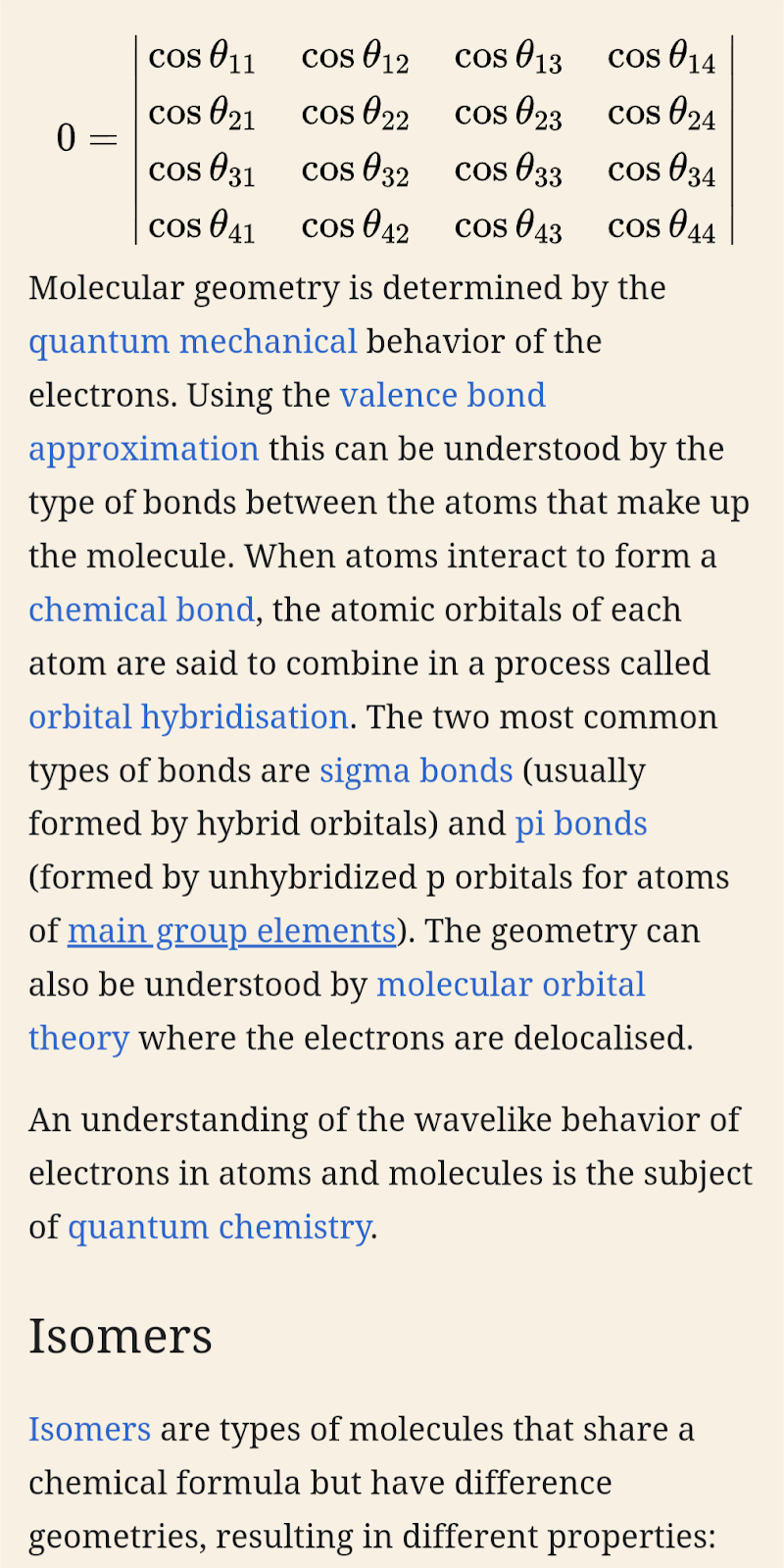It a χηισμ
Molecules, by definition, are most often held together with covalent bonds involving single, double, and/or triple bonds, where a "bond" is a shared pair of electrons (the other method of bonding between atoms is called ionic bonding and involves a positive cation and a negative anion).
Molecular geometries can be specified in terms of 'bond lengths', 'bond angles' and 'torsional angles'. The bond length is defined to be the average distance between the nuclei of two atoms bonded together in any given molecule. A bond angle is the angle formed between three atoms across at least two bonds. For four atoms bonded together in a chain, the torsional angle is the angle between the plane formed by the first three atoms and the plane formed by the last three atoms.
There exists a mathematical relationship among the bond angles for one central atom and four peripheral atoms (labeled 1 through 4) expressed by the following determinant. This constraint removes one degree of freedom from the choices of (originally) six free bond angles to leave only five choices of bond angles. (The angles θ11, θ22, θ33, and θ44 are always zero and that this relationship can be modified for a different number of peripheral atoms by expanding/contracting the square matrix.)







Comments
Post a Comment
No Comment